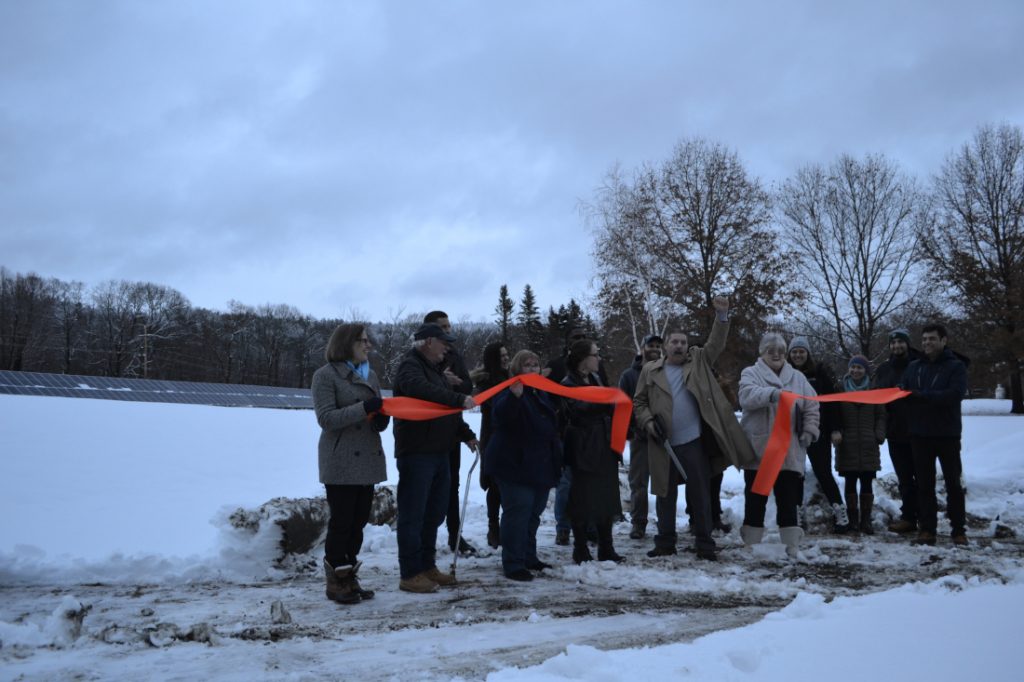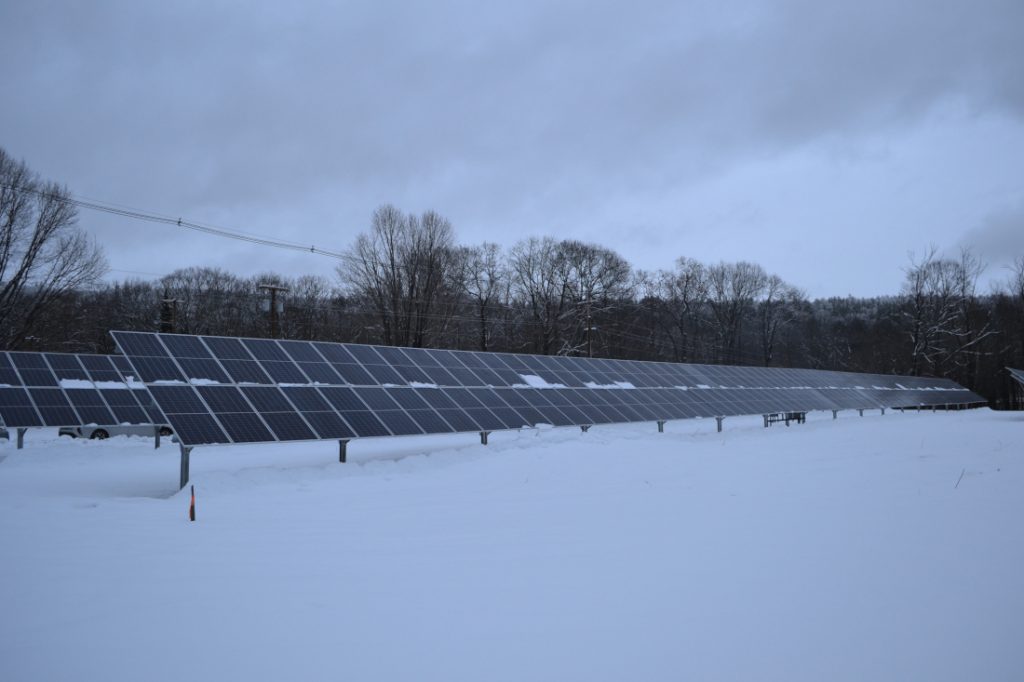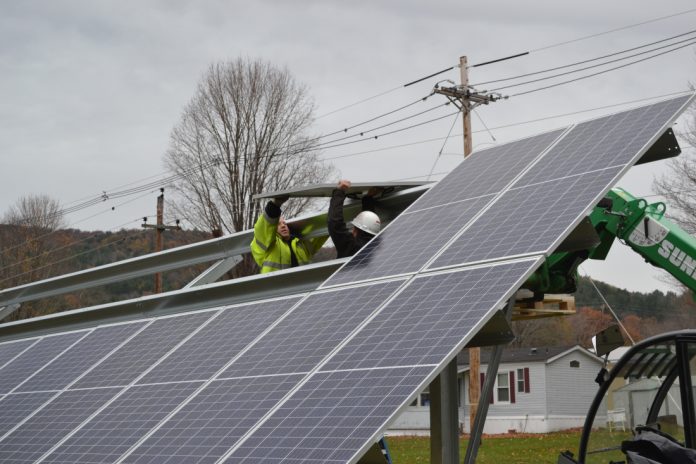ROCs Lead the Way for Solar Power in Manufactured Housing Communities

Resident-owned communities (ROCs) are setting a shining example of the energy savings possible for manufactured home communities.
Mascoma Meadows is a 50-home resident-owned community in Lebanon, N.H. Last year it became the first ROC in the Granite State to become a community powered by solar electricity.
The 384-panel solar array is fully operational, no matter what the weather. Energy from the panels is sold back to the grid. That change represents and the pollution-reduction equivalent of taking 17 cars off the road each year. Profit from the array at this community powered by solar will reduce the lot rent by $22 per month.
Mascoma Meadows’ array is built on a half-acre donated by Pastor Bruce Jerome and the congregation of the neighboring Abundant Life Church of God. The community Board President Calvin Goude said he still gets emotional talking about the meeting when the donation was announced.
“We have a pretty good relationship with the church,” Goude said. “They’re great neighbors.”
Construction began in November 2018. Steel stands hold flat panels that face out from the front of the community.

How Do Power Purchase Agreements Work?
The Renewable Energy Fund covered the project with a $168,000 grant. New Hampshire’s Public Utility Commission manages the fund, with an impact investor through a Power Purchase Agreement. Brentwood, N.H.-based ReVision Energy installed the array.
With the PPA, Mascoma Meadows can access long-term economic and environmental benefits. Meanwhile, the project provides an opportunity for investors who share those values. After five years, Mascoma Meadows can purchase the array, at a discount, with financing from the New Hampshire Community Loan Fund.
Goude said he’s excited for Mascoma Meadows to be the first ROC in the state to tackle this project.
“Manufactured home communities like ours are perfect places for sustainable-energy projects, and it will make the homes here even more affordable,” he said. “We appreciate the work the Vermont Law School and ROC-NH did to pull this project together and, of course, our neighbors at Abundant Life church for donating the land. We never expected that.”
Solar Power Has Evolved, Helps Keep Communities Affordable
Using solar power as a source of renewable energy has been gaining popularity, akin to the uptick during recent years with water submetering in manufactured housing communities. On average, the solar market has experienced a 59 percent growth rate over the last decade. The technology has evolved to make panels lighter, more powerful and more affordable, especially for homeowners.
The current level of solar energy being produced can power 11.3 million homes in the United States, Solar Industry Research Data shows.
While there are some challenges with bringing solar into manufactured home communities, others have been able to utilize it for added savings for their residents.

What Stops Other Projects for Communities Powered by Solar?
The main hurdle has to do with land ownership, according to the National Renewable Energy Laboratory. While residents in both private and resident-owned communities pay lot rent, the land owners differ. In resident-owned communities, residents control the land, putting them at the helm of the decision-making process for projects like solar arrays. ROC members are able to democratically decide if the project is attractive. In most communities, residents would need permission from the property owner.
Other ROCs are starting to use solar to create extra savings for their residents.
Residents at Lakeville Village in Geneseo, N.Y., are working to install a solar field on their property. They have received help from a ROC USA Network affiliate, Pathstone Corporation. This has been vital in keeping the project going, said Richard Nereau, head of Lakeville’s solar committee.
The 4-megawatt system is about 40 times bigger than the New Hampshire array. It will go up on 20 acres during summer and fall of 2019. Nearby residents in the wider community can use power from the panels. Nereau estimates 2,500 homes and businesses can benefit from the system.
RER Energy Group of Reading, Pa., will lease the land from the cooperative, and cover the entire cost of the array’s installation and maintenance.
Receive Energy Discounts, Earn Income from Co-op Lease
Lakeville Village residents will receive a 10-percent discount on their electricity bills, while the lease will generate about $17,000 a year in income for the co-op. The community will use revenue for capital improvement projects like paving roads or development of a community center.
“It’s guaranteed income and we get to use it to improve the community,” said Anne Radesi, president of Lakeville’s board of directors.
Finally, Nereau has a bit of advice for residents with interest in a solar project. He said to resources through town, county or state governments.
Radesi agreed, adding that tax incentives are often available for businesses working with manufactured home communities to install solar. RER Energy Group is doing just that in order to get reimbursement for installing the array, and will also work with the town to leverage a tax-incentive program.
“Within New York state, they have different programs they are promoting for clean energy,” Radesi said. “You have to get a company that’s ready to invest in your area.”










